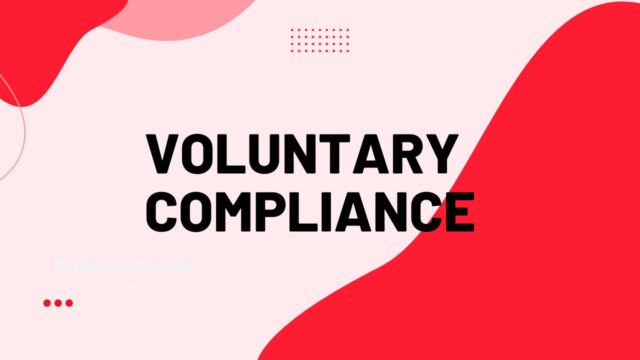
Best Practices for Voluntary Compliance
One of the ways a company can practice its corporate social responsibility is through voluntary compliance. This type of program ensures that employees have access to company policies and procedures. However, it can also lead to litigation. The company that engages in voluntary compliance must be sure to implement best practices for voluntary compliance. Here are some best practices:
ERISA section 502(i) or 502(l) language in VC notice letters
Employers may also include ERISA section 502(i) and/or 502(l) language in VC (Visa Corporation) notice letters to clarify the alleged violation. ERISA section 502(i) requires the employer to provide its members with timely notice of the alleged violation within 90 days of receipt of the VC notice letter. Unless a state law requires that the employer provide notice to its employees within the same timeframe, this language in VC notice letters may be inappropriate.
ERISA section 5002(i) requires employers to include language describing the civil penalty imposed under section 502(l) for failure to provide timely disclosure of plan information. VC notice letters must include the amount of penalty imposed and how this amount will be used for future compliance. If the employer fails to comply with ERISA section 502(i), it is subject to a civil penalty assessed by the Secretary of Labor.
CCPA compliance is not optional
California’s new privacy law, the California Consumer Privacy Act, requires businesses to be transparent about how they use and disclose personal information. Most businesses are not legally required to disclose how they use or share personal information. The CCPA makes businesses comply with consumers’ rights to access, amend, or delete their personal information. Additionally, it gives consumers the right to opt-out of certain types of marketing and advertising. If you’re a California business, you need to be familiar with the new laws.
While the CCPA may not be enforceable yet, it will have a substantial impact on corporate privacy initiatives. It will affect all TMT industries, but brands focused on the United States will have an edge. GDPR, on the other hand, was largely ignored by brands focused on the United States. Now, however, the rising tide of privacy concerns is forcing TMT companies to mobilize around data privacy. Here are some tips to get your company ready for the new requirements.
ML/FT abuse of voluntary compliance programmes
The Financial Action Task Force (FATF) has noted that a potential for ML/FT abuse is inherent to voluntary compliance programmes. However, the potential abuse of such programmes varies according to their characteristics. For example, a VTC programme which allows taxpayers to amend tax reporting information does not pose a substantial risk of ML/FT abuse. On the other hand, a VTC programme that includes tax amnesty or asset repatriation carries a greater ML/FT risk, as do some programmes that exempt them from implementing certain AML/CFT measures.
Some countries may struggle to implement a VDP if their compliance levels are not sufficient. For this reason, they may face a difficult time convincing the FATF that they have taken the necessary steps to mitigate the risks. The FATF is also concerned about the abuse of VDPs in jurisdictions with high economic crime levels. However, this does not necessarily mean that a country cannot apply for a VDP.
EBSA confirmation in writing of compliance with voluntary compliance with EBSA
EBSA requires that all participants or beneficiaries of a transaction be given advance notice of the proposed transaction. This notice must be written and distributed at least 30 days before the transaction is consummated. EBSA does not consider PTE 94-71 as a retroactive exemption for transactions that are already in progress. EBSA also must approve the method used to distribute the notice. To avoid potential issues in the future, it is best to follow the guidelines for voluntary compliance.
EBSA’s investigation process typically begins with a visit to the plan sponsor’s office. During the visit, investigators will likely submit follow-up documents and ask questions. In some cases, the investigation will conclude without finding any ERISA violations. In such cases, an EBSA investigation team will issue a voluntary compliance “notice letter” identifying violations and inviting plan officials to correct the plans.


































